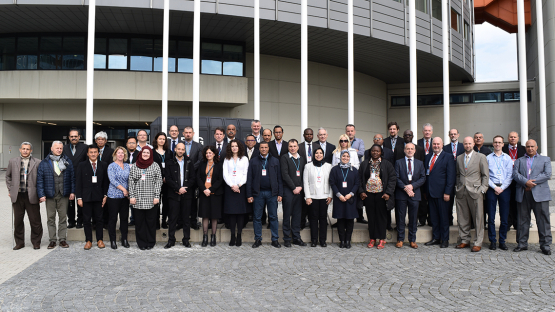Thirty-nine representatives from regulatory bodies and waste management operators in 21 Member States have met in Vienna from 13 to 17 March 2017 to discuss and evaluate how each country is managing radioactive sources throughout the entire source lifecycle. It is essential to establish and implement a national cradle-to-grave regulatory control system for radioactive sources to ensure their comprehensive management. The meeting enabled the participants, who were brought together within the framework of a dedicated regional IAEA technical cooperation project, to refine their understanding of the requirements for the effective implementation of national cradle-to-grave control systems.
Together with international experts and IAEA staff, the participants examined different arrangements and reviewed the requirements needed to implement the various control systems. Among the topics discussed were policies and strategies for the use, regulation and management of sources; a regulatory framework for the management of sources; transport of sources (including import, export and removal); national inventories of sources; control over orphan sources; and managing radiation incidents or accidents involving orphan sources. The debate also covered security of sources, storage of sources and disposal of disused sources, and a mix of plenary sessions and working groups facilitated a thorough exploration of relevant topics and challenges from the perspective of IAEA Member States.
A further meeting focused on the development and implementation of national policies and strategies for the management of radioactive sources has taken place subsequently from 20 to 23 March. At this event, 32 representatives from 21 countries examined progress and challenges in the development and implementation of national policies and strategies related to cradle-to-grave management of radioactive sources. The participants reviewed work carried out at the national level over the past five years with the support of the IAEA and other international partners, and discussed the major challenges encountered when developing, adopting and implementing national policies and strategies. The participants also took part in practical exercises where, based on realistic fictional situations, they had to propose a national policy and strategy for the management of radioactive sources, including disposal.
Both meetings have helped Member States to advance their understanding of the requirements for the establishment and implementation of a national cradle-to-grave control system for radioactive sources, focusing particularly on policy and strategy, two essential elements in an effective control system. The meetings offered very effective fora for the sharing of experiences, and for defining the best safety practices as mandated by the IAEA Safety Standards.
Both meetings took place within the framework of the IAEA TC project INT9182, Sustaining Cradle-to-Grave Control of Radioactive Sources. The project benefits considerably from the international technical and financial support provided by the European Union, the United States of America and Spain.








